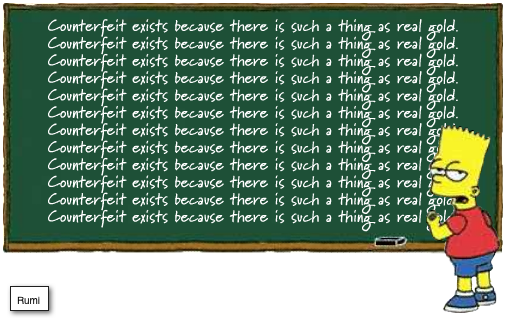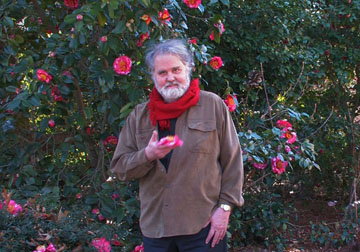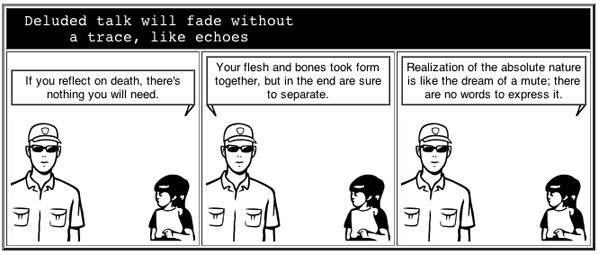Category Archives: sufism
Attar: What Is Not the Mystic
Filed under sufism
Teaching Story: Every Which Way the Wind Blows

Mullah Nasruddin was a digging a grave in the cemetery when from afar he saw the sand blowing in the distant desert. His imagination got the better of him and he thought it was a band of brigands. In fear for his life he jumped into the half dug grave site.
In the distance a group of honest merchants were returning home from a profitable business. They saw the strange site of a Mullah in his long flowing robe jumping into a grave. So they went to the cemetery to find out what was going on.
They got to the grave and saw Nasruddin shivering in fright. They asked him, “Mullah, what are you doing there?”
By now the Mullah understood his mistake and was relieved that these were not the thieves he had imagined. The Mullah got out of the grave and said, “It all depends on the way you look at it. I’m here because you’re here and you’re here because I’m here.”
Source: Nasrudin-stories blog
(When I first presented this tale on Transformative Tools I titled it Downward Causation.
Filed under experiential learning, sufism
The impossibility of education
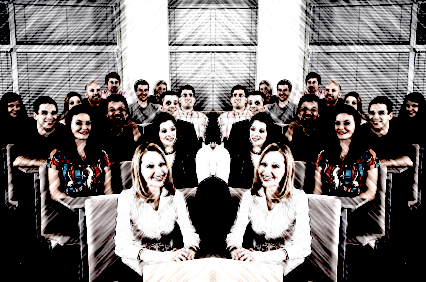
Once, the villagers invited Mulla Nasruddin to deliver a lecture on spiritual matters.
When he got on the pulpit, he found the audience was not very enthusiastic, so he asked “Do you know what I am going to say?”
The audience replied “No”, so he announced “I have no desire to speak to people who don’t even know what I will be talking about” and he left.
The people felt embarrassed and called him back again the next day.
Once again he asked the same question – “Do you know what I am going to say?”
This time when he asked the same question, the people replied “Yes” So Mullah Nasruddin said, “Well, since you already know what I am going to say, I won’t waste any more of your time” and he left.
Now the people were really perplexed. They decided to try one more time and once again invited the Mullah to speak the following week.
Once again he asked the same question – “Do you know what I am going to say?”
Now the people were prepared and so half of them answered “Yes” while the other half replied “No”. So Mullah Nasruddin said “The half who know what I am going to say, tell it to the other half” and he left!
(Carried over from Transformative Tools blog; part of the process of transitioning its content to squareONE explorations.
Filed under education, experiential learning, sufism
Minding the Mind
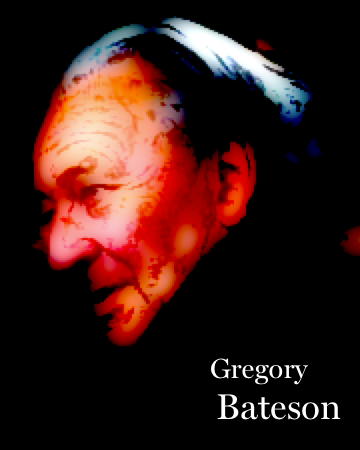
My favorite (Gregory) Batesonian teaching story, reconfigured and originally via Idries Shah.
A frenchman is teaching another french rudimentary english.
“So, the word for froid crème glacée is ‘cold ice cream.’ ”
“What’s the word for chaude crème glacée?”
“Oh, they have no need for it, so there’s no word for it.”
Although I have an acute memory, I can’t recall which friend of mine did me the favor of bringing the work of Gregory Bateson to my attention. It was a long time ago. (Maybe it was Chris Irion? Pilcher?) I dug into Bateson’s Mind and Nature thirty years ago, when it was published. In another sense, it only matters as a fuzzy starting point. It was definitely in 1996 that I returned to his opus in a re-doubled effort to make some further connections. This was due to meeting my mentor and squareONE partner Judith Buerkel in 1995. During this first meeting it turned out Bateson was our mutual touchstone. Bingo!
It was only then, after a more mature effort to really deal-in, that Bateson’s understanding came to deeply inform my outlook, and to comprise a large facet in my favorite lens. The interesting nexus for this was a weird insight evoked by my trying to make coherent the weaving together of three things, the Sufi teaching story, my new (at the time) fascination with others’ theorizing about experiential learning (this via Mezirow and Kolb,) and, my revisiting Bateson (via his last book, Where Angels Fear. Toward An Epistemology of the Sacred.) About this last visitation, the bookmark stuck a third of the way through the book–when I picked it up again–marked where I had left off nine years earlier.
Judith basically told me to woodshed! Ultimately, we grappled with how to underpin our applications–what was to become the tool kit for squareONE. We spend a lot of time discussing the practical import for our work of our different Batesonian outlooks. We both thought Bateson was an adept designer; (although this is a novel sense about Bateson, who overtly was an anthropologist, psychologist, philosopher, and naturalist.)
Anyway, my insight at the time, excitedly delivered at our weekly meeting at Arabica, was this: it was apparent to me that something like Batesonian metalogues were embedded, even secreted in the structural folds of many Middle Eastern teaching stories. Judith responded: “They’re folded in everything.”
I’ve been revisiting Bateson once again over the last month. This, however, comes long after I added my experience and understanding of his understanding, (well, some of it,) to be, basically, the fundamental facet of my favored lens. By which I mean: some synergy of dynamic ideas-in-interplay make up the essential background frame for my intentional observations. Funny how lens and frame come together!
I use a ‘reduced set’ roughly taken from Bateson. Perhaps it would better to say appropriated from Bateson. I’m not a Batesonian because I’m eclectic, disorganized, not masterly, and, an ol’ hippie. Yet, in another sense, I often turn the world around to experience its different sides using my idiosyncratic (sort of) Batesonian lens.
If I assert that I’m dedicated to being a student of my environment, then in the background of this claim is this lens. You should know this to know where I’m coming from. I’ll have more to say about this soon.
I’ve recently had reason to woodshed some more and revisit the work of Gregory Bateson. I was invited to participate in a seminar at the local grad school. Stephen Nachmanovitch, author of the terrific book Free Play, musician, and student, friend, colleague of Gregory Bateson, is to give a lecture on something to do with experiential learning and play.
Getting back to one of my main people has been fantastic. The Explorations Blog is going to go on a Bateson trip for a spell. Stay tuned. I’ll wrap with a review of resources I’ve discovered out in the shed.
Filed under adult learning, Gregory Bateson, sufism
Secrets Revealed
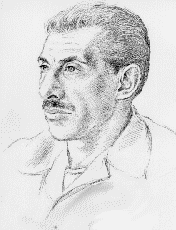
I noted recently via a google alert that lectures of Idries Shah, taken from a series of hard-to-obtain cassettes, have been made available on the web site, The Institute for the Study of Human Knowledge. Ishk.net is ostensibly the web of home of all things ‘Shah.’
The wikipedia article on I. Shah seems to me fair enough; and, I’ve been tracking his work for 20+ years. Shah, who departed the worldly coil at 72 years-of-age in 1996, was a controversial figure. His effort to promote in the west an accessible and cosmopolitan Sufi-inflected regimen for self-development and spiritual growth was the most notable among the several such original efforts which unfolded in the mid-sixties.
The controversies are many, yet I won’t go into them. This isn’t my purpose today. It’s enough to mention that Shah could be termed a neo-Sufi, whose project unhooked Sufism proper from it’s narrow traditions, and, whose own bona-fides remain murky. Still, during a time when Sufism itself was an exotic arrival on the nascent counter-cultural scene, Shah enjoyed patronage, was an entrepreneur, and, was a prolific writer. Any notoriety he gathered in didn’t prevent him from, for a time, becoming the face of Sufism–the foremost Sufi.
Sometime in the late eighties I worked part-time at a group home for the mentally disadvantaged. My boss, Jim, was surprised I had heard of Shah. Shah was Jim’s main man. He told me he had some tapes he wanted to loan me. He brought them in, a set in a box entitled if memory serves, Wisdom of the Secret. Shah reminded me of Alan Watts: great voice, humorous, compelling.
I must have listened to those eight tapes twenty times. I took to enjoying Shah’s books, especially favoring the many that contained teaching stories, including the series of books with the tales of Nasruddin. To this day, these materials penetrate my own sense of experiential learning. I have learned even the surface of some of the so-called story-based applications may provide surprising reconfigurations away from habit, cognitive error, blind spots, etc..
(Later, I became very interested in Shah’s career and its notorious moment as cultural ripple in a specific historical moment.)
Four of Shah’s lectures may be streamed or downloaded as mp3s. I’m familiar with them already because they first appeared as single cassettes. I recommend all of them. My favorite is Overcoming Assumptions That Inhibit Spiritual Development. From the intro,
So one must learn to be flexible, one must learn to question assumptions, one must learn to put up other assumptions than one’s customary ones to study things…some of the things are, for example, our narrative materials which I have published… Now various points of view on these produce a certain kind of flexibility. Trying too hard doesn’t work, trying to make out what they mean doesn’t work because this material is instrumental not indoctrination.
There’s also an interview in four parts on youtube.
Here’s Part One.
A year ago I put together the ten parts of other videos and posted it. I wrote then,
He was a walking library of Sufic esoteric material, yet, he also brought these traditional secrets to proto-new age stages in the sixties. He walked a weird razor’s edge in maintaining that these materials could retain their power even when stripped of their context, as long as the context of the user was precisely calibrated to these bare-of-context materials!
Video 48m Happy Nous Year
Teaching Cartoon: Paranormal
Story from The Pleasantries of the Incredible Mulla Nasrudin, (Idries Shah.) h/t Max Cannon’s cartoon franework Build Your Own Meat.
HAPPY NOUS YEAR
[flashvideo filename=http://squareone-learning.com/video/IdriesShah.flv /]
On youtube there is a series of videos, apparently excerpted from a longer documentary, that features the renowned-in-his-time counter-cultural figure, self-proclaimed Sufi, misterioso teacher, charlatan, Idries Shah. I joined the ten parts and present it here; 49 worthwhile minutes beckon. Pay attention!
My string of adjectives is not intended to underplay Shah’s reputation, such as it has been able to be sustained. He was a walking library of Sufic esoteric material, yet, he also brought these traditional secrets to proto-new age stages in the sixties. He walked a weird razor’s edge in maintaining that these materials could retain their power even when stripped of their context, as long as the context of the user was precisely calibrated to these bare-of-context materials!
Speaking of post-modern Sufis, I recommend the volume by Ian Almond, Sufism and Deconstruction. A comparative study of Derrida and Ibn ‘Arabi, (2004:Routledge.) A rigorous mysticism, moved toward the subject drilling deeply beyond it’s (his or her,) self, cannot be about fixing identity.
Filed under sufism
Teaching Cartoon: Wrong Question
Versions of this teaching story are found in the folklore of the Mid-east and North Africa. This version refashions source material discovered in Matthew Helmke’s Humor and Moroccan Culture.
Happy new year to all in this year of the Rat.
Online cartoon generation courtesy of stripgenerator v1.0.3.
DHIKR
Shaikh Abul Janaab Najmuddin al-Kubra (may Allah favor him,) in his book Fawatih ul-Jamaal, wrote “Dhikr is flowing in the body of creatures by the necessity of their breath, because through their breathing, the letter ‘Ha’ of the Divine Name ‘Allah,’ is the very sound made with every exhalation and inhalation and it is a sign of the Unseen Essence serving to emphasize the Uniqueness of God. Therefore it is necessary to be present with that breathing, in order to realize the Essence of the Creator. God’s name ‘Allah’ encompasses God’s ninety-nine Names and Attributes and consists of four letters, ‘Alif,’ ‘Lam,’ ‘Lam’ and ‘Hah’ (ALLAH). The absolute unseen Essence of God, Glorious and Exalted, is expressed by the letter ‘Hah’ which represents the Absolute Unseen which is the same letter ‘Hah’ which is used in the name ‘Allah’ which encompasses the ninety-nine Names and Attributes. That name, as we said, consists of four letters: the letter ‘Ha’ which is ‘Ha’ and ‘Alif’, and it represents the Absolute Unseen of Allah. The first ‘Lam’ is for the sake of identification and the second ‘Lam’ is for the sake of emphasis.
Filed under sufism
I’M CONCEALED
I’m so close to you that I’m far apart,
So completely merged that I’m separate,
So vastly exposed that I’m concealed,
So whole and sound that I’ll never be healed.
#1121, from Rumi’s Kolliyaat-e Shams-e Tabrizi
Edited by Badiozzaman Forouzanfar (Tehran, Amir Kabir, 1988).
From translations of Rumi by Zara Houshmand
Filed under sufism
TO HIM IT’S ALL ONE
|
The friend to whom flower and thorn are one, In whose faith, Koran and Cross are the same — Why should we worry? To him it’s all one: The swiftest horse or a donkey that’s lame. #454: From Rumi’s Kolliyaat-e Shams-e Tabrizi Translated by Zara Houshmand |
Filed under sufism

